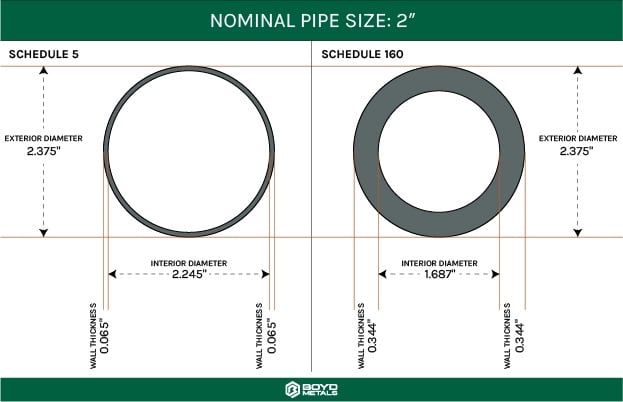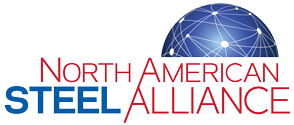For the second part of our series on the differences between tubing and pipe, we are going to talk about measurements and wall thickness.
Pipes and tubing aren’t interchangeable. They’re used for different applications. We covered some of those applications in part 1. Because of their different uses, the systems for measuring pipe are very different from the systems for measuring tubing.
PIPE
Let’s start by addressing the more complicated of the two: pipe measurements. Because pipes are used to transfer sometimes pressurized fluids and gasses, the inside diameters are more important than the outside diameters. That’s why nominal (in name only) dimensions are used to describe approximate inner dimensions.
To use an example from our Guide to Pipe Sizes, our 2” pipe has an outside diameter of 2.375.

If the wall thickness of this pipe is ANSI schedule 5, then the walls will be .065” thick, which makes the interior diameter 2.245”.
The same 2” pipe with a wall thickness of ANSI schedule 160 would have walls that were .344” thick, and the diameter of the interior would be 1.687”.
ANSI pipe schedules are variable, based on the nominal pipe size.
TUBING
The measurement system for tubing is based on exact measurements of the outside wall of the pipe. Variations are usually available for different wall thicknesses. Because tubing is not used with pressurized liquids or gasses, and instead is used for structural applications, its manufacturing tolerances are tighter and the sizing is often more exact than pipe.
One notable exception to this rule is copper tubing, whose nominal size is .125” smaller than its actual outer diameter.



